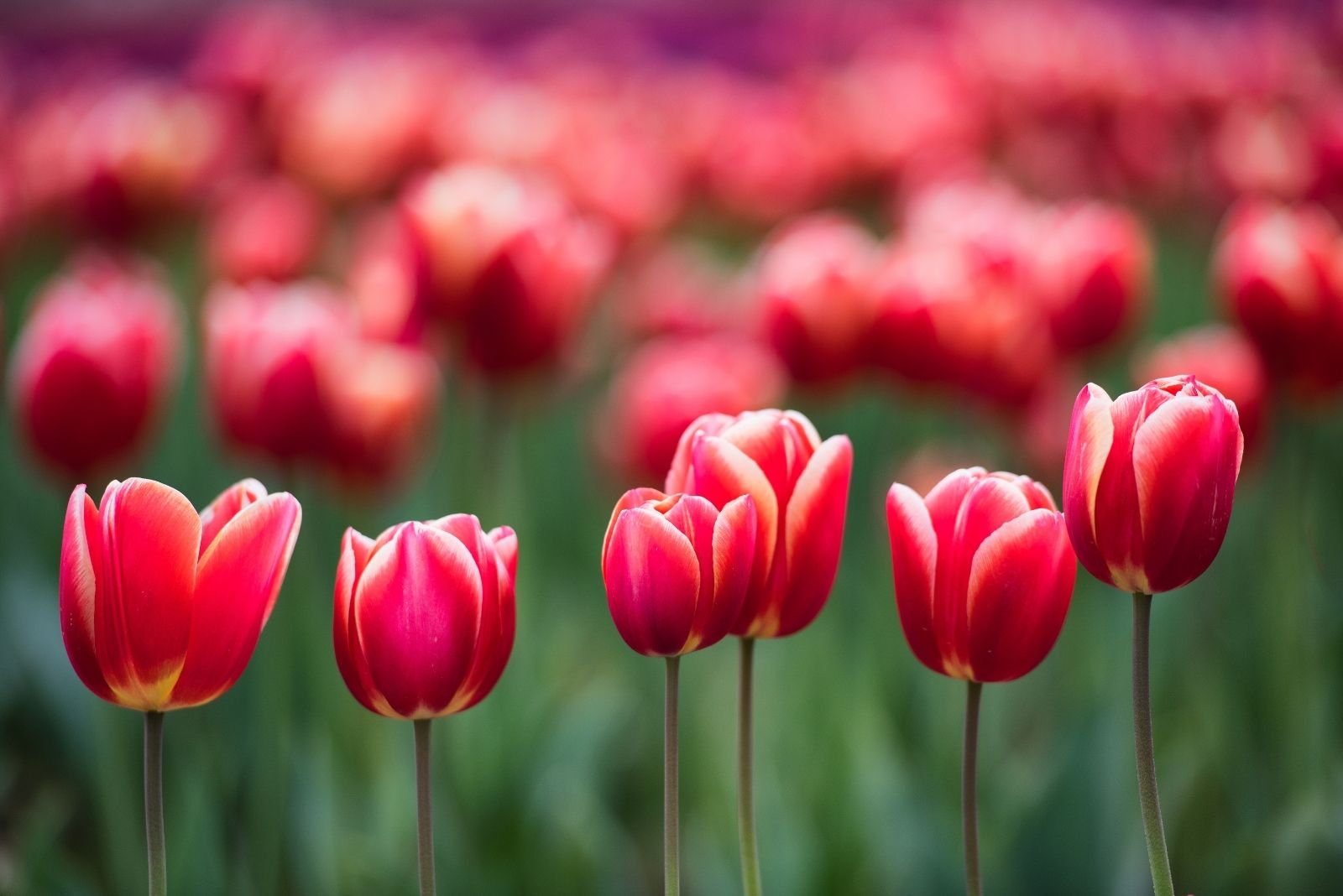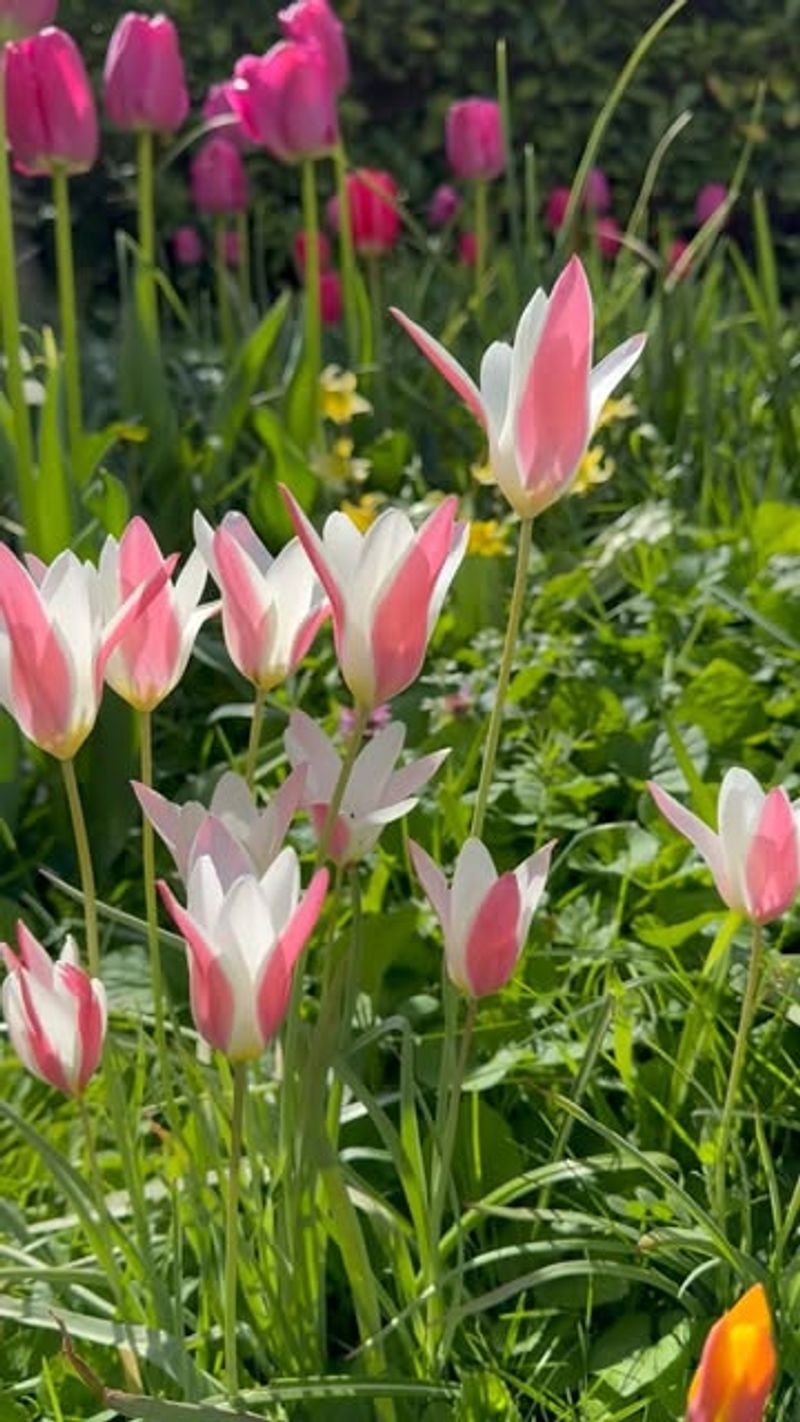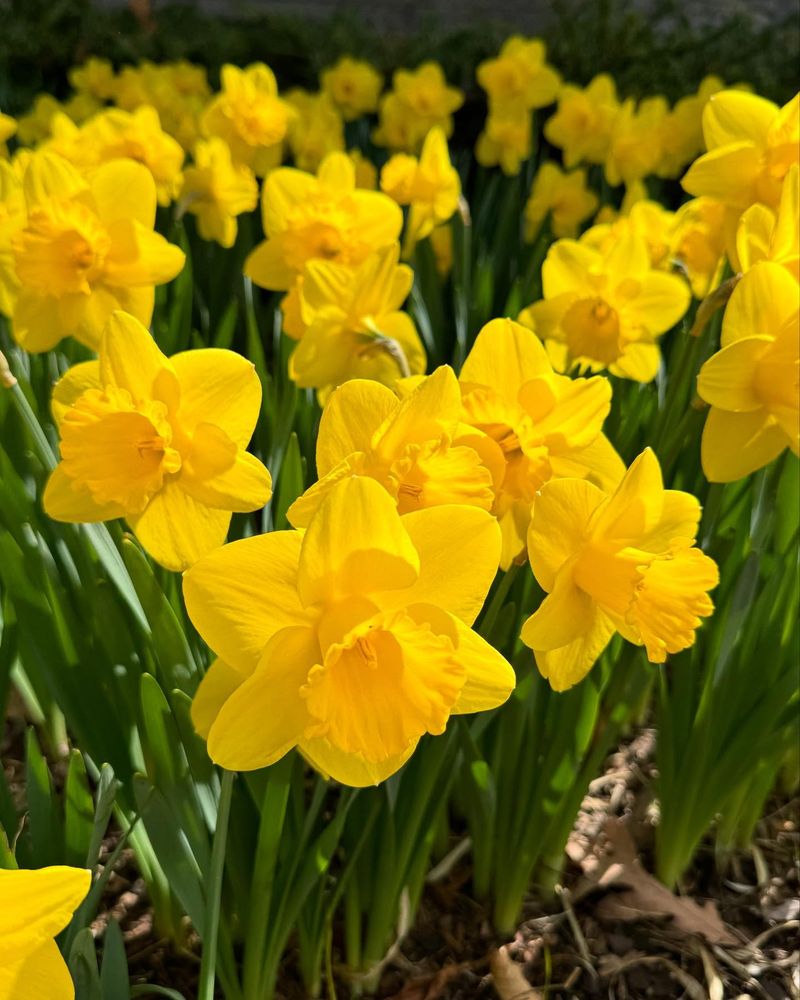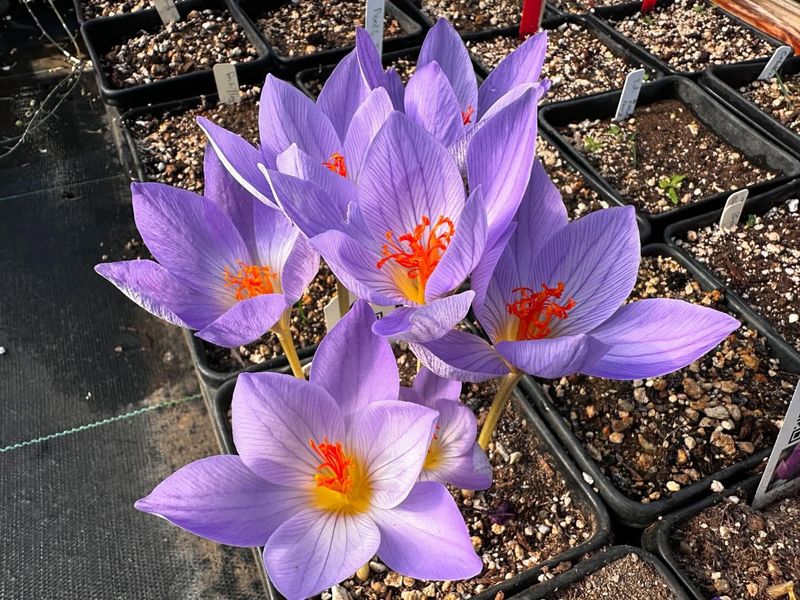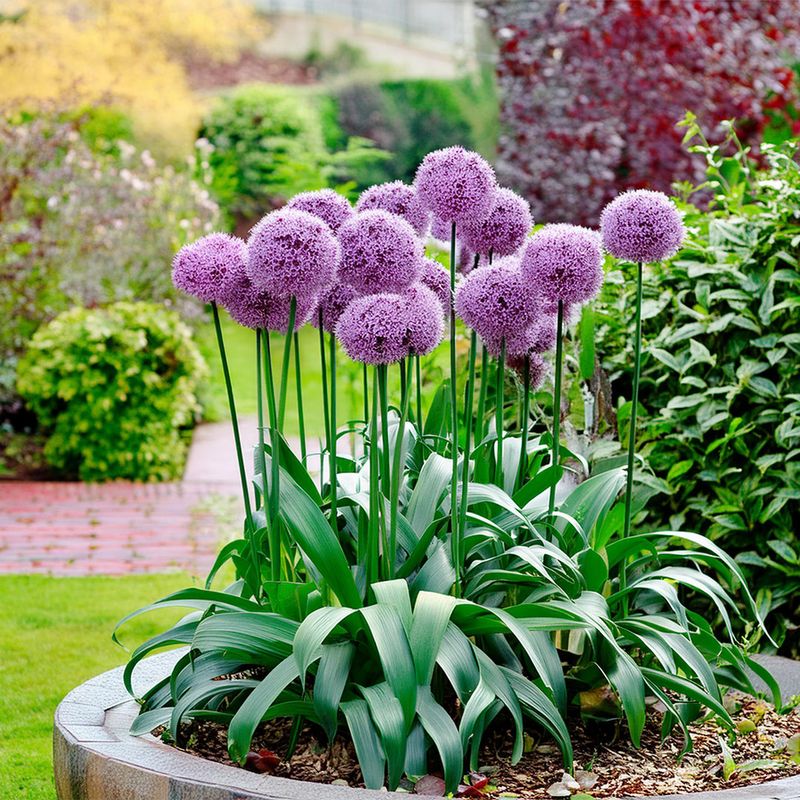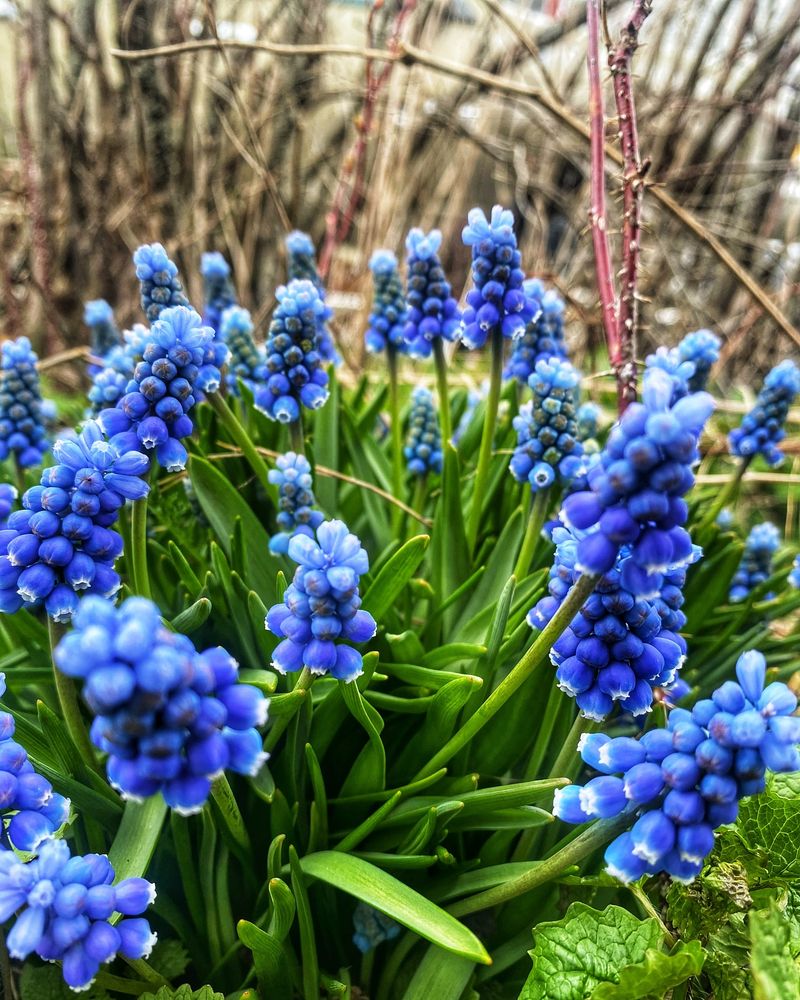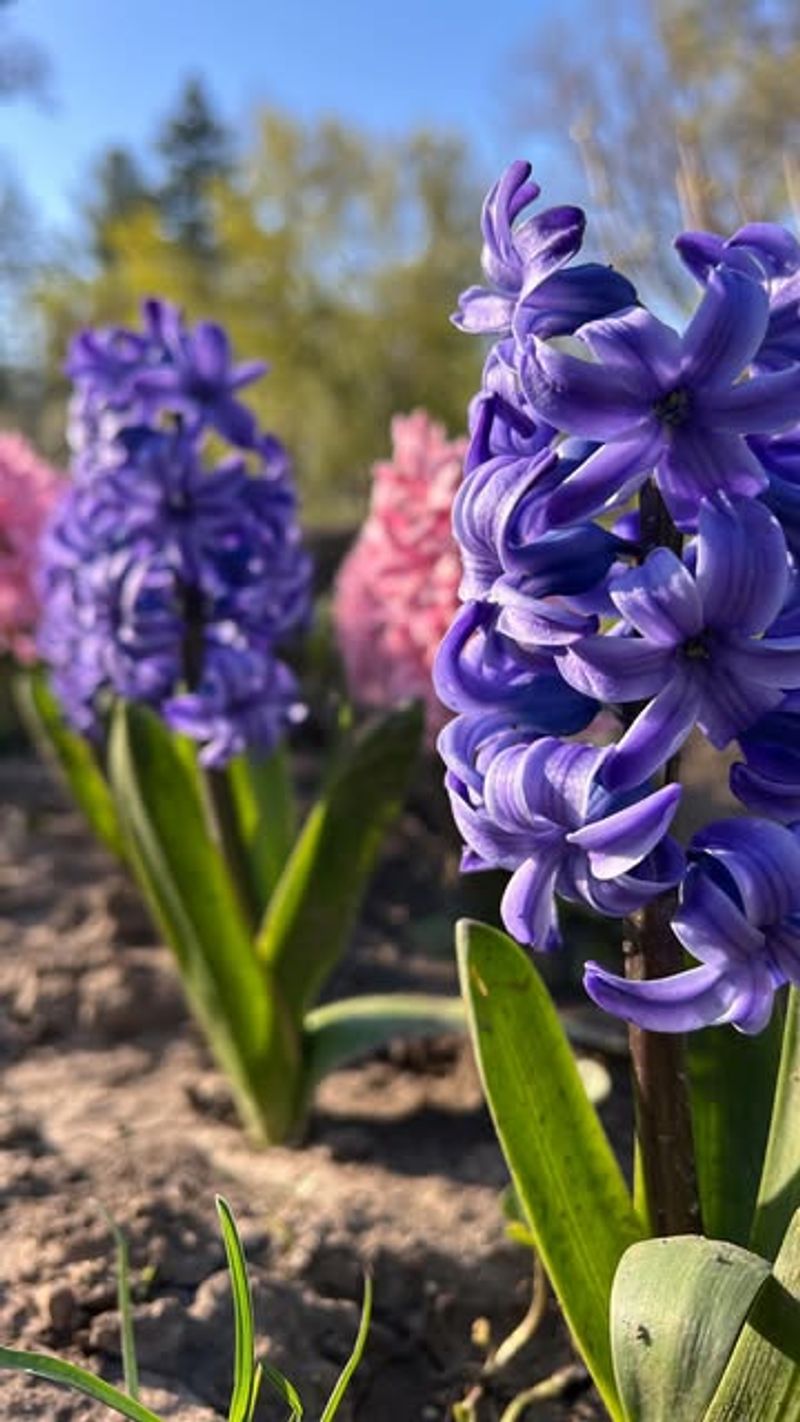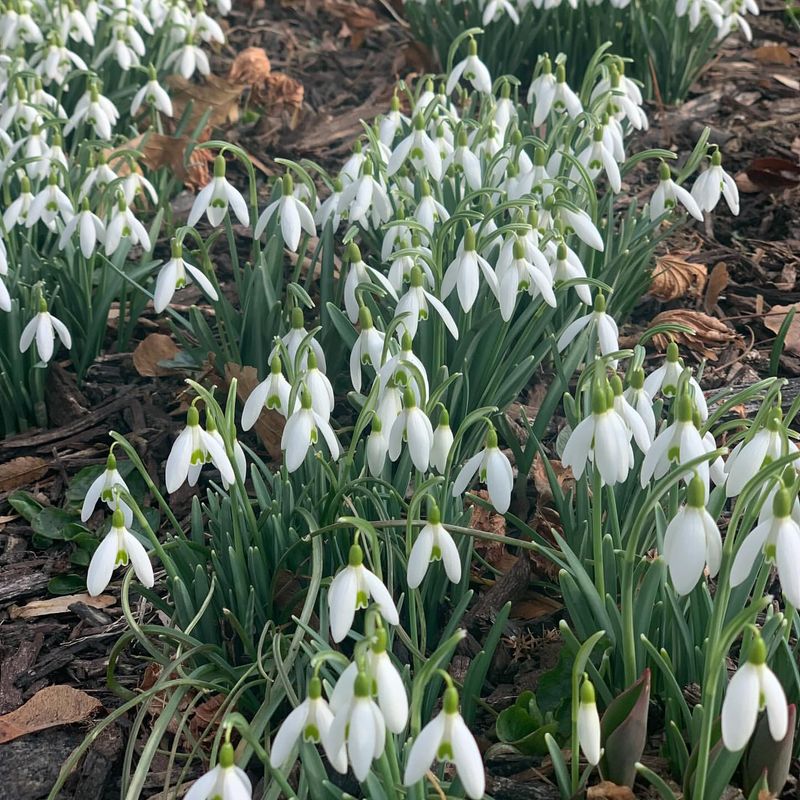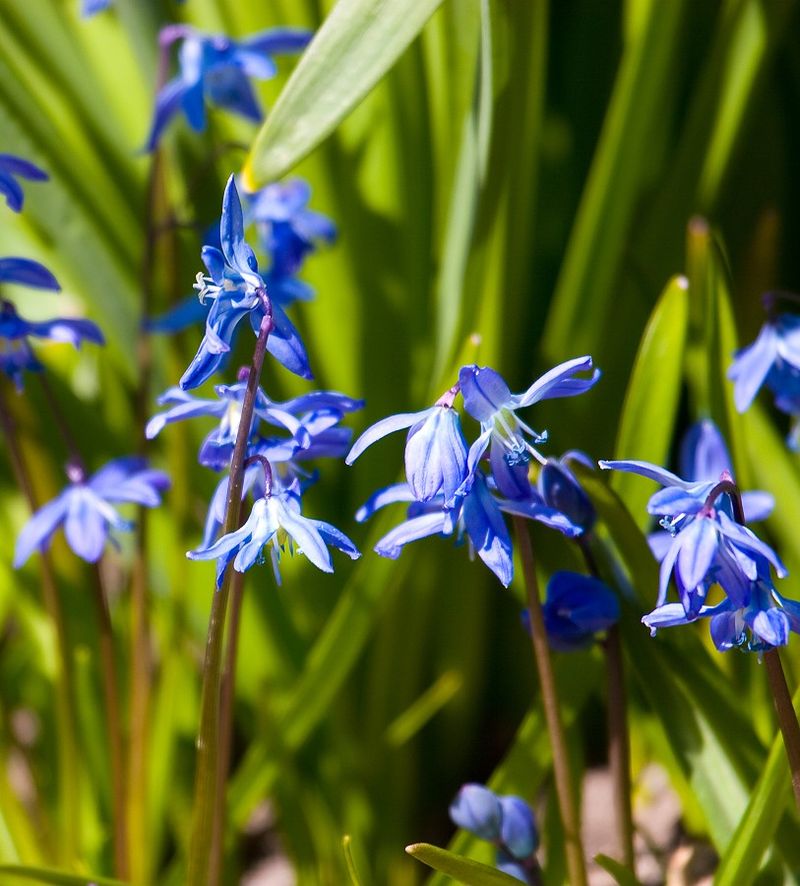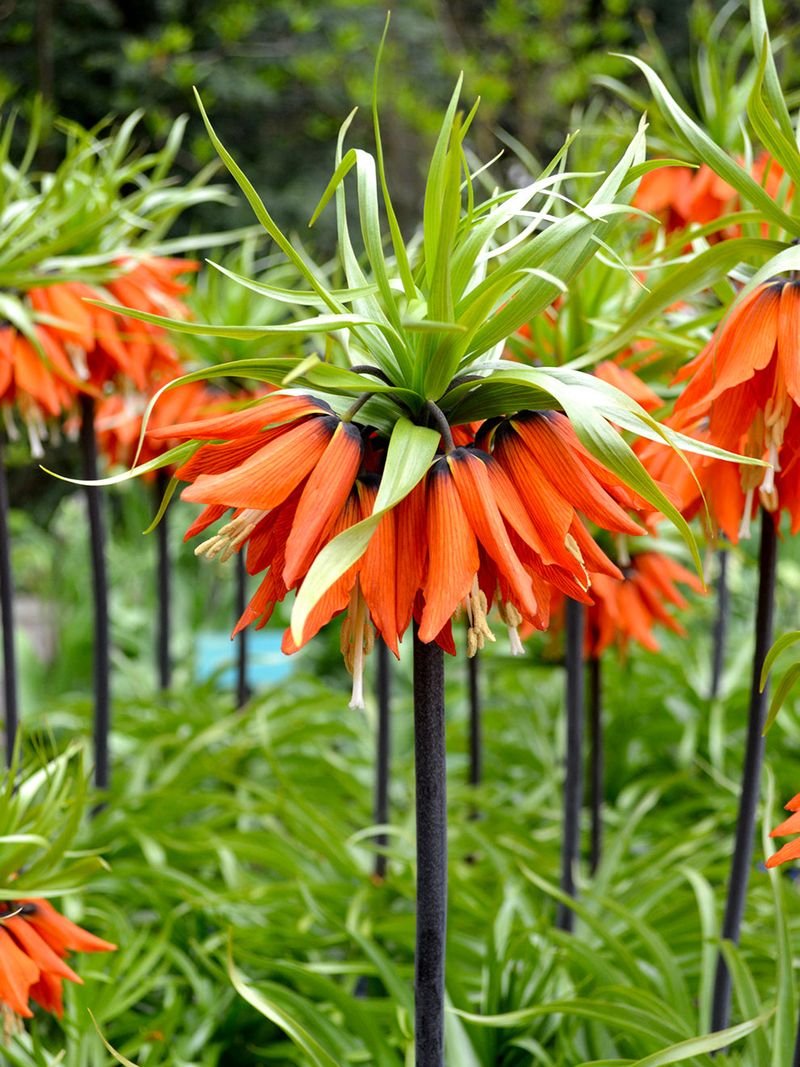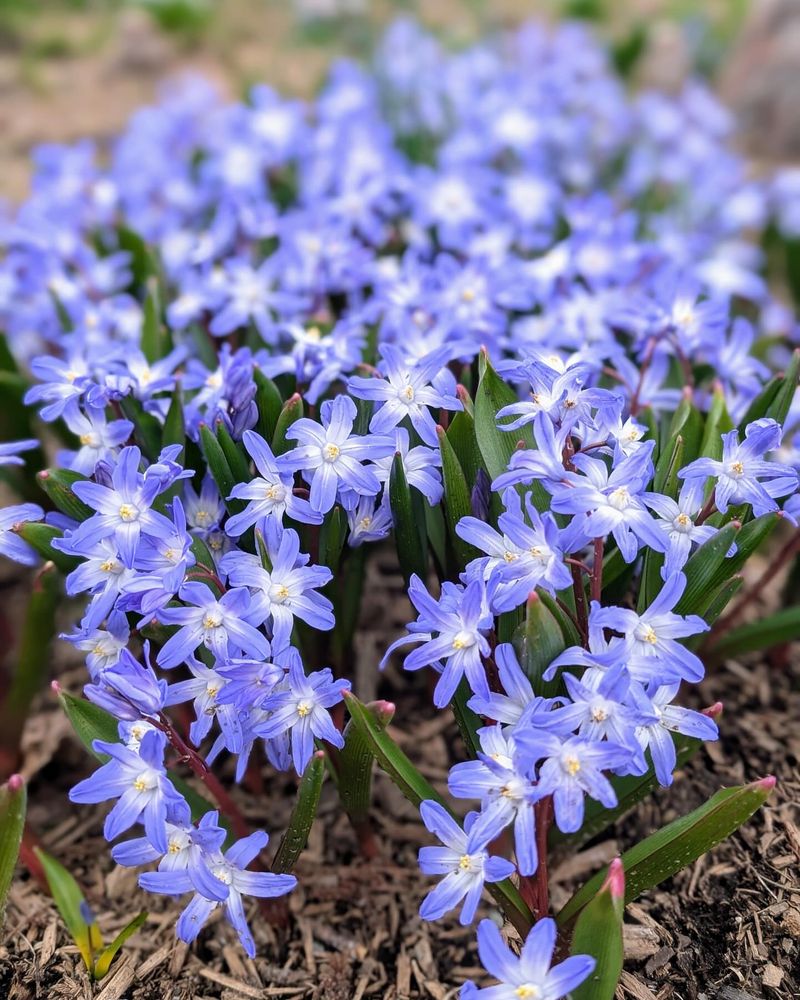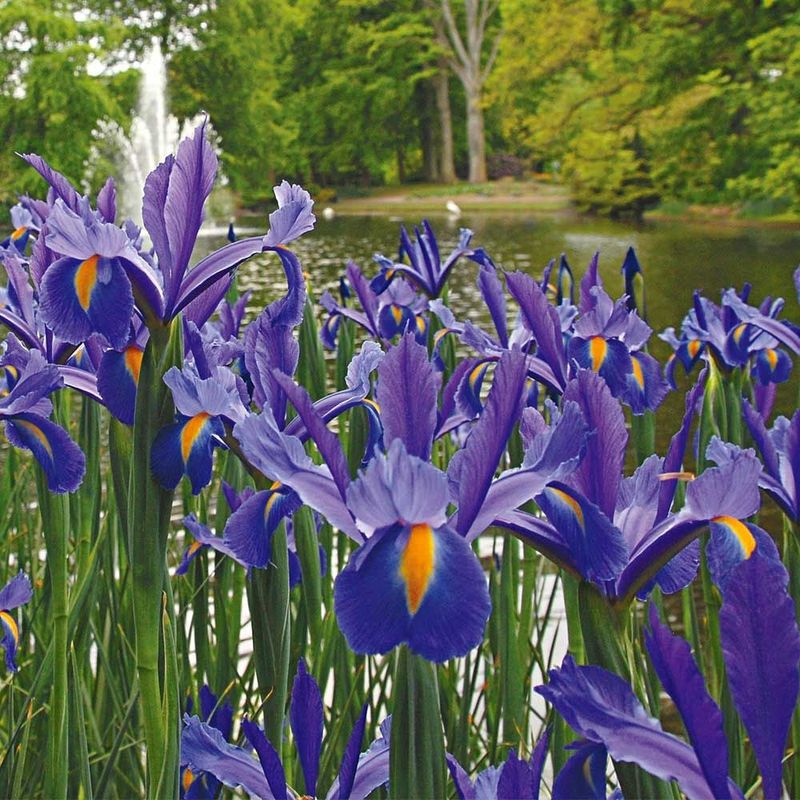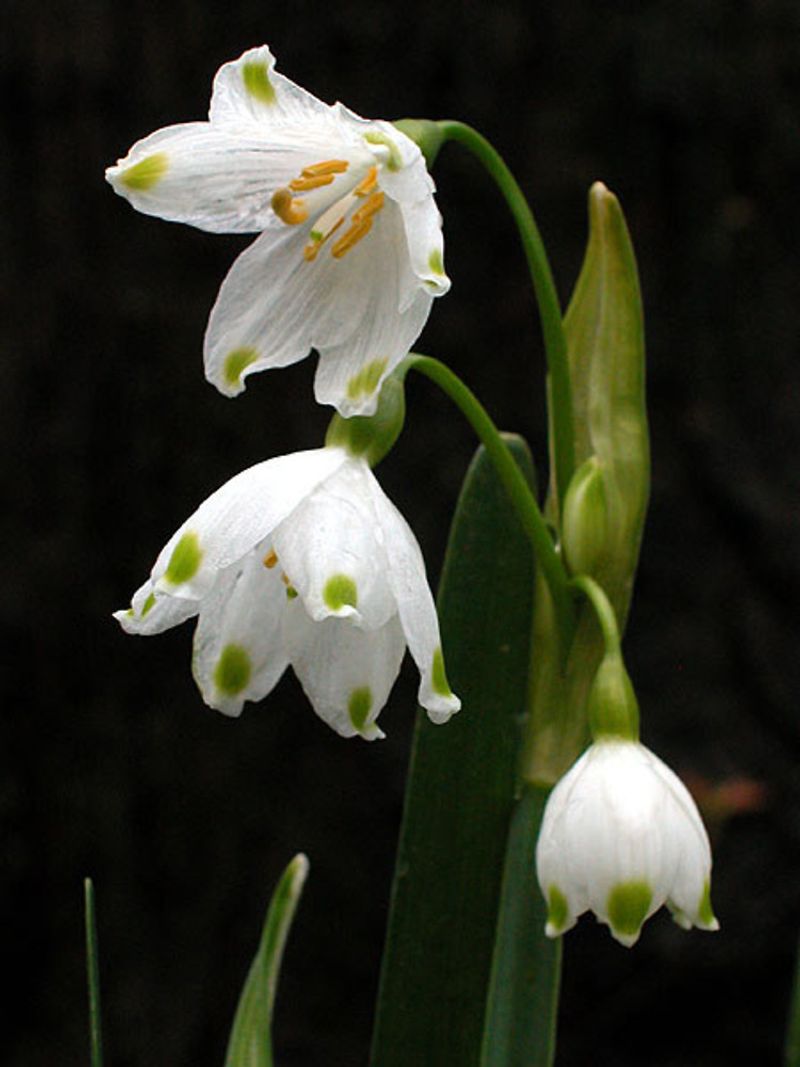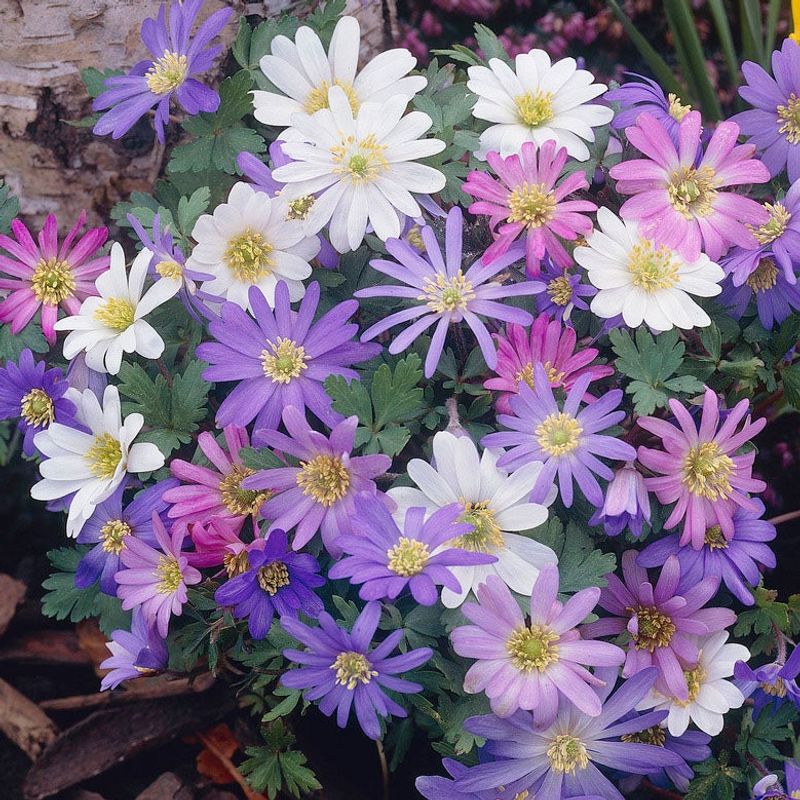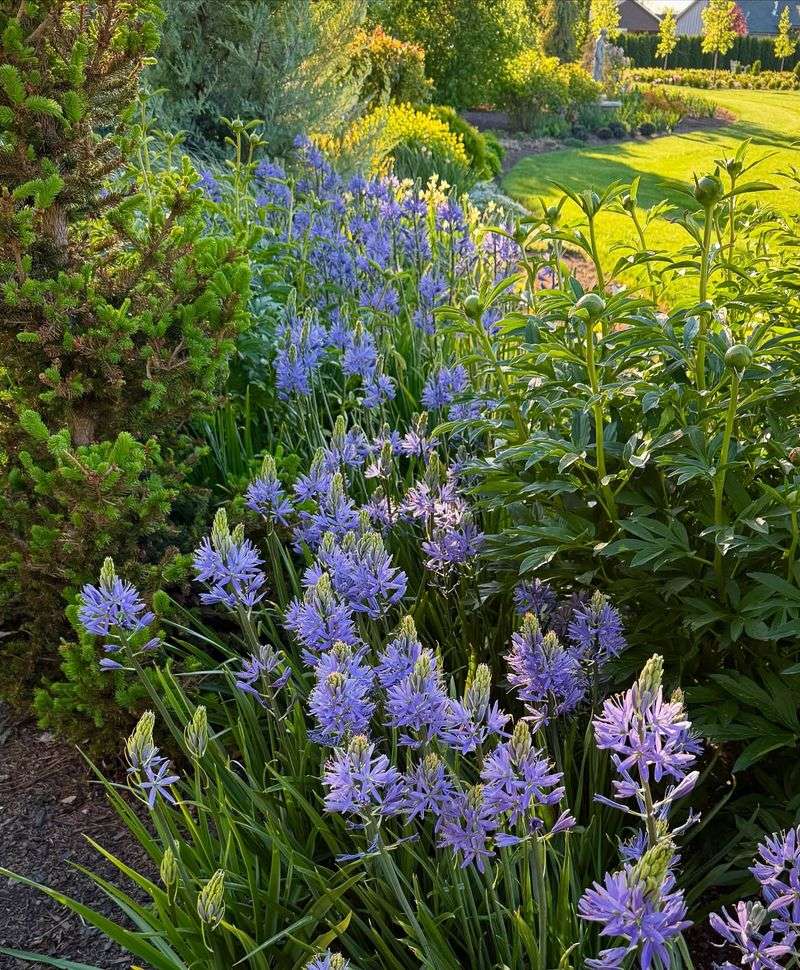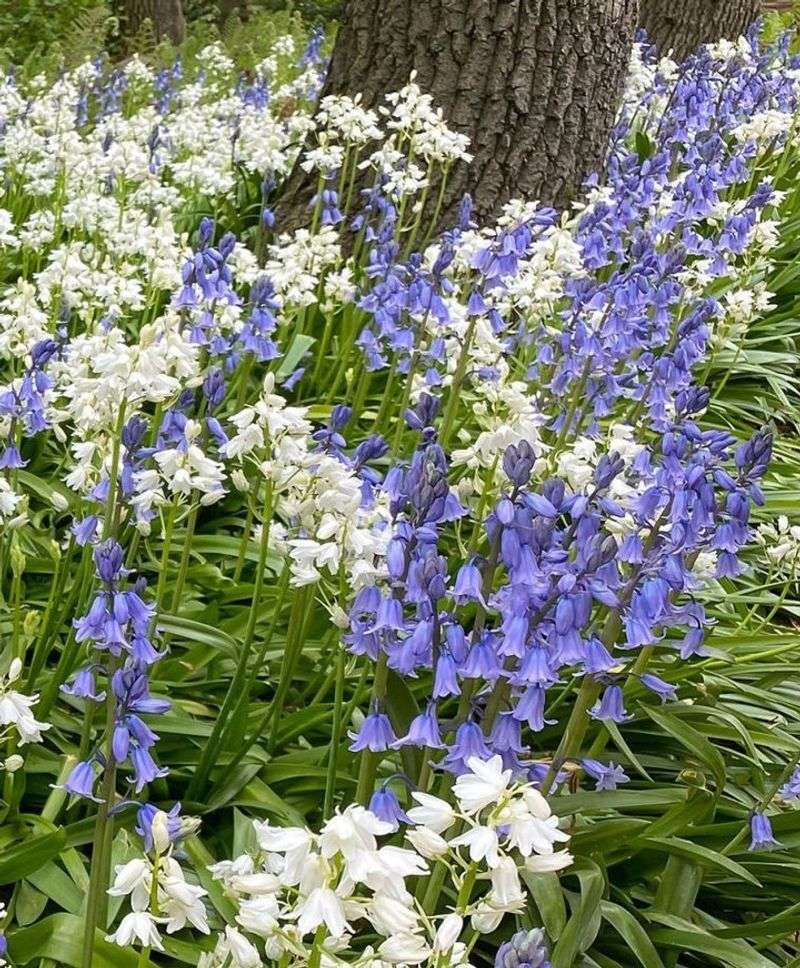Fall in Illinois brings crisp air, colorful leaves, and the perfect opportunity to plant spring-blooming bulbs. The state’s cold winters actually help these underground treasures establish strong root systems before their spectacular spring debut. When the snow finally melts, these dormant beauties will be ready to burst forth with color.
In my own Illinois garden, I’ve found that autumn planting feels like sending a gift to my future self. The bulbs quietly develop beneath the frozen ground all winter, requiring almost no attention until they transform our landscapes after the long Midwestern winter.
1. Tulips (Tulipa)
Nothing announces spring in the Prairie State quite like tulips pushing through the last patches of melting snow. Their cup-shaped blooms perform beautifully in our heavy clay soils when properly amended.
Plant these Dutch favorites 6-8 inches deep in mid-October when soil temperatures have cooled. The cold Illinois winter provides the perfect chilling period they need to bloom magnificently.
For best results in our region, choose Darwin hybrids or species tulips, which tend to perennialize better than other varieties in our sometimes unpredictable climate.
2. Daffodils (Narcissus)
Reliable and deer-resistant, daffodils thrive throughout Illinois gardens year after year. Their cheerful yellow and white blooms often appear while patches of snow still linger on the ground.
Unlike some bulbs that fade away after a few seasons, daffodils naturalize readily in our Midwestern conditions. Many varieties will multiply for decades without any special care.
Plant them in September or October, about 6 inches deep in well-drained soil. For a striking display, group at least 12 bulbs together rather than planting them individually throughout the garden.
3. Crocus
Often the very first bloomers of the season, crocuses create patches of purple, yellow, and white when most Illinois gardens still look barren. Their diminutive size belies their hardiness in our challenging climate.
Squirrels sometimes dig up these small bulbs, so consider planting them 4-5 inches deep (slightly deeper than typically recommended) to discourage furry thieves. The extra depth won’t prevent their emergence.
For maximum impact in your Illinois landscape, plant crocuses in large drifts where they’ll catch the early spring sunlight and announce winter’s retreat.
4. Allium
Standing like purple lollipops above your garden, ornamental alliums bring architectural interest to late spring Illinois landscapes. Their perfectly round flower heads create stunning vertical elements among other perennials.
Fall planting allows these members of the onion family to establish roots before our harsh winters. Their drought tolerance makes them perfect for Illinois gardens that experience occasional dry spells.
Many varieties, from tiny ‘Moly’ to basketball-sized ‘Globemaster,’ perform beautifully in our climate zone. Plant them where their spherical blooms can be backlit by morning or evening sun for dramatic effect.
5. Grape Hyacinth (Muscari)
Resembling tiny bunches of blue-purple grapes, muscari create rivers of color when planted en masse in Illinois gardens. Their intense color appears just as the landscape awakens from winter dormancy.
Fall planting allows these hardy little bulbs to establish themselves before frost. They’ll return reliably each year and gradually spread to form impressive colonies over time.
Consider planting grape hyacinths along walkways or garden borders where their cobalt blue flowers can be appreciated up close. They’re particularly striking when paired with early daffodils for a classic spring color combination.
6. Hyacinth (Hyacinthus)
The intoxicating fragrance of hyacinths drifting through an April garden makes them essential for Illinois gardeners. Their tightly-packed flower spikes in pink, blue, white, and purple create vibrant focal points.
Plant these bulbs in October, about 6 inches deep and 6 inches apart. Choose a spot with excellent drainage to prevent rot during our sometimes wet spring seasons.
While hyacinths may not perennialize as readily as daffodils in our climate, their extraordinary scent and color make them worth replanting every few years for optimal display.
7. Snowdrops (Galanthus)
Brave little snowdrops often push through frozen Illinois ground while winter still has a firm grip on the landscape. Their delicate white blooms, dangling like tiny lanterns, symbolize nature’s resilience.
Unlike most bulbs that prefer waiting until fall, snowdrops actually benefit from being planted “in the green” right after flowering. However, they establish successfully from dry bulbs planted in September as well.
Place these early bloomers where you’ll see them from windows during late winter days. Their subtle beauty provides hope during the final weeks of Illinois’ long winter season.
8. Siberian Squill (Scilla siberica)
Creating breathtaking blue carpets across Illinois gardens in early spring, Siberian squill naturalizes with remarkable enthusiasm. The intense azure flowers appear just after snowdrops but before most other spring bloomers.
Fall planting allows these adaptable bulbs to establish themselves before winter sets in. They’ll multiply rapidly in coming years, especially in partially shaded areas under deciduous trees.
Many Chicago-area neighborhoods are famous for their blue lawns in April when these bulbs naturalize throughout the grass. Plant them by the hundreds for a similar effect in your own Illinois landscape.
9. Crown Imperial (Fritillaria imperialis)
Regal and dramatic, crown imperials create conversation-starting focal points in Illinois spring gardens. Their clusters of bell-shaped flowers hang beneath a crown of leaf-like bracts atop 3-foot stems.
Plant these statement bulbs in September or early October, about 8 inches deep in well-drained soil. They appreciate a handful of bone meal in the planting hole to support their impressive growth.
While their distinctive fox-like scent repels rodents (a bonus for Illinois gardeners battling critters), position them where the tall blooms can be admired but the fragrance won’t overwhelm outdoor seating areas.
10. Glory-Of-The-Snow (Chionodoxa)
Star-shaped blue flowers with white centers make glory-of-the-snow a charming addition to Illinois gardens in earliest spring. Often blooming alongside crocus, these diminutive beauties create pools of color when winter barely loosens its grip.
Fall planting allows these tough little bulbs to establish before frost. They’ll return faithfully each year and gradually spread to form impressive colonies that thrive despite our temperature fluctuations.
Consider planting them in rock gardens or at the edges of woodland areas where they’ll receive spring sun before deciduous trees leaf out fully.
11. Dutch Iris (Iris x hollandica)
Elegant and architectural, Dutch irises bring sophisticated beauty to late spring Illinois gardens. Their slender stems and distinctive blooms in blue, purple, yellow and white provide excellent cutting flowers.
Plant these bulbs in October, about 5 inches deep and 4 inches apart. Unlike bearded irises, these bulbous varieties require minimal care once established in well-drained soil.
Their bloom time fills the gap between spring daffodils and summer perennials, providing crucial color during the transition period. In central Illinois gardens, expect these beauties to flower in mid-May most years.
12. Summer Snowflake (Leucojum aestivum)
Often mistaken for oversized snowdrops, summer snowflakes produce charming white bell-shaped flowers with green tips on 18-inch stems. Despite their name, these beauties bloom in mid-spring throughout Illinois.
Fall planting gives these adaptable bulbs time to establish before winter arrives. Unlike many spring bulbs, they tolerate the occasionally wet conditions common in Illinois gardens, even thriving in rain gardens.
Their ability to naturalize in challenging spots makes them valuable for difficult areas where other bulbs might rot. Plant them in September or October about 4 inches deep.
13. Anemone blanda (Grecian Windflower)
Daisy-like flowers in shades of blue, pink and white make Grecian windflowers delightful additions to Illinois spring gardens. Their low-growing habit creates natural-looking drifts between taller spring bulbs.
Soak these rock-hard tubers overnight before planting in fall to speed germination. Plant them just 2-3 inches deep with the pointed end down for best results in our Midwestern soils.
While slightly less cold-hardy than some bulbs, they perform reliably throughout most of Illinois when planted in protected locations with good drainage and winter mulch.
14. Camassia
Native to American meadows, camassia brings starry blue spikes to Illinois gardens in late spring. Their naturalistic appearance makes them perfect partners for prairie-style landscapes popular throughout our state.
Fall planting allows these North American natives to establish before winter. Unlike European bulbs, they’ve evolved to handle our continental climate extremes with minimal fuss.
Plant them where they can receive spring moisture followed by drier summer conditions. They’ll gradually multiply to form impressive colonies that celebrate our region’s natural heritage.
15. Spanish Bluebells (Hyacinthoides hispanica)
Thriving in shade where many bulbs struggle, Spanish bluebells produce arching stems of bell-shaped flowers in blue, pink or white. Their adaptability to Illinois’ dappled woodland conditions makes them especially valuable.
Plant these hardy bulbs in September or October about 4 inches deep. They’ll gradually form impressive colonies under deciduous trees, providing color after most spring ephemerals have finished.
Their late bloom time (usually May in Illinois) extends the spring flowering season. Consider pairing them with emerging hostas and ferns for a beautiful woodland garden transition into summer.

